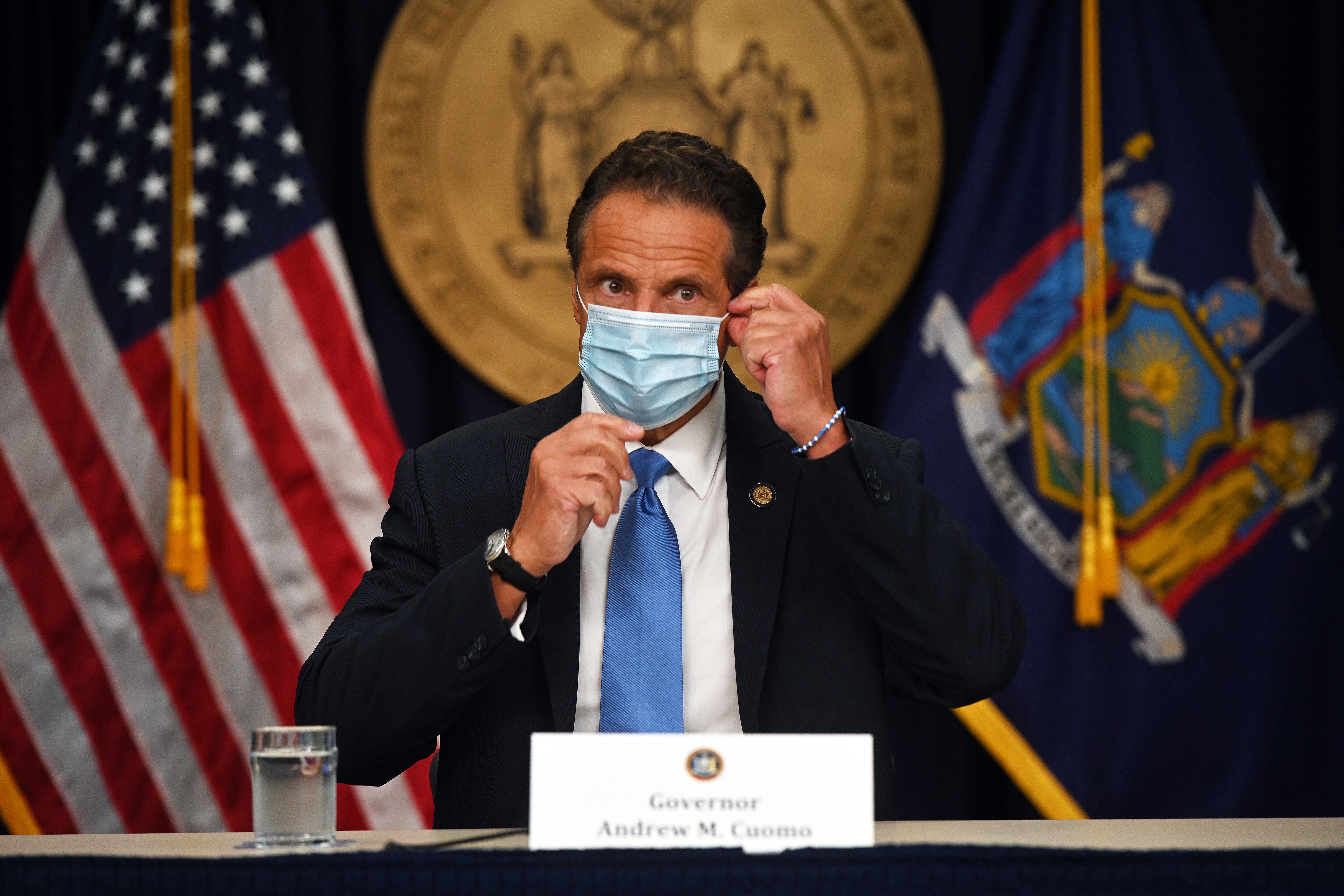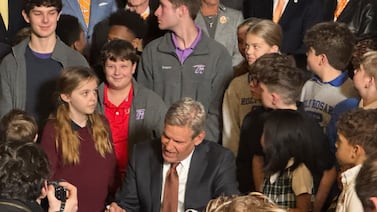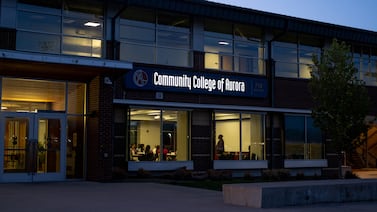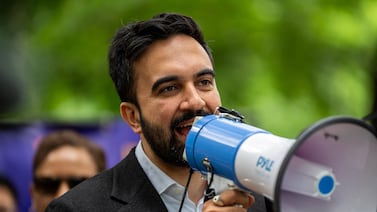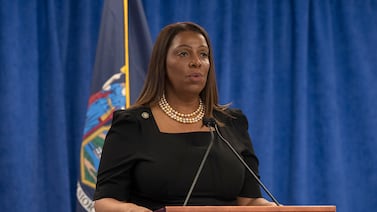The state will not force New York City school buildings to shut down if the citywide coronavirus positivity rate exceeds 9%.
Reversing a state policy established over the summer, school buildings can now stay open so long as coronavirus testing shows there is less virus present in schools than in the surrounding community, Gov. Andrew Cuomo announced Monday.
“If their schools are below the level of positivity in the community then they can keep the schools open,” Cuomo said. “It is up to the local school district to make that decision.”
Cuomo’s announcement means there is no longer a single threshold for shutting down school buildings citywide, which puts the onus on Mayor Bill de Blasio to decide whether to stick to his current strategy of shutting down individual school buildings and classrooms when cases pop up or consider another citywide shutdown.
The governor’s decision to scrap the state’s closure threshold comes as the city’s coronavirus positivity rate has increased in recent weeks, though it has not yet reached the state’s original 9% threshold. State data put the city’s positivity rate over a seven-day average at 6.24%, though city data put the number at 9%. (City and state officials use different methodologies to calculate the city’s positivity rate but, the state figure is what would have determined whether school buildings would shutter.)
De Blasio briefly closed school buildings in November when the city’s positivity rate reached 3% and has since only reopened preschool programs, elementary schools, and schools serving students with complex disabilities.
Michael Mulgrew, head of the city’s teachers union, has generally supported de Blasio’s approach to school reopening that focuses on building-level closures, despite alarm among some of his members about rising infection rates. But in a shift, he is now urging officials to shut down school buildings if the city’s positivity rate crosses 9%, according to the state’s figures.
“Using that state measure, if the community infection rate in the city hits 9%, the safe thing to do is to close the schools, even if the in-school rate is lower,” Mulgrew said in a statement Monday afternoon. “Safety comes first.”
Cuomo’s decision to withdraw the state’s 9% closure threshold will also allow him to sidestep a potentially difficult fight with Mulgrew, which could force de Blasio to bear the brunt of yet another controversial decision about whether to keep school buildings open.
Benjamin Linas, an epidemiologist at Boston University, said it may be possible to keep school buildings open safely even as the citywide positivity rate reaches 9% or beyond.
“There has been some transmission in schools across the country, but not a lot, even in places that have very high COVID” infection rates, Linas said.
Still, he added: “I think you have to be honest that we’re learning as we go and we could be wrong. That’s why it’s smart not to carve this in stone and [be] ready to move as the data change.”
City officials have touted relatively low infection rates in school communities as evidence that school buildings are generally safe; the city’s protocol calls for randomly testing 20% of students and staff in school buildings each week. Since buildings reopened in December, the city conducted about 100,000 tests in schools, with 0.68% coming back positive, de Blasio said.
State officials provided few details about how school districts should determine whether infection rates in schools are larger than the surrounding community, which could lead to building shutdowns, at least in theory.
However it’s unlikely the positivity rate in schools, as determined by random testing, would eclipse the citywide rate. The citywide rate includes many people who are symptomatic and more likely to have the coronavirus while the random testing is likely only picking up asymptomatic cases, as students and staff are instructed to stay home if they’re sick and may seek testing elsewhere.
The latest round of uncertainty about whether the mayor should consider citywide closures will not affect most students, as all middle and high schools are fully remote and many other families have opted out of in-person learning. Some advocates and educators have argued the city has not invested enough in improving remote instruction.
De Blasio has suggested that rolling out vaccines to educators could hasten the return of in-person instruction and said Monday that teachers should receive vaccines as soon as this month. But state officials ultimately determine when teachers will be eligible for vaccines, and the city’s efforts to use the shots it already has have been sluggish.
“New York City is pushing to have school staff included in vaccine distribution this month, and has set-up a gold standard to keep our schools safe,” Miranda Barbot, an education department spokesperson, said in a statement. “We’ll continue to closely monitor metrics, including in-school testing.”

